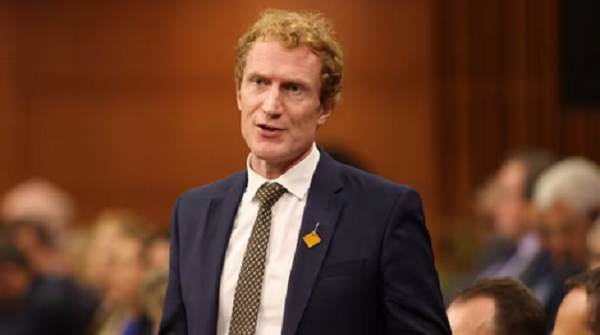IMF trims global economic growth forecast, warns of potential trade war
The International Monetary Fund trimmed its global economic growth forecast for next year and issued a stark warning about the cost of a potential trade war between the world’s largest economies.
The IMF expects global output to expand by 3.2 per cent next year, down 0.1 percentage point from its previous forecast in July, it said in its latest World Economic Outlook published Tuesday. The growth forecast for this year was left unchanged at 3.2 per cent.
The fund’s forecast for Canada was also unchanged. It sees the country’s GDP growing 2.4 per cent in 2025, up from 1.3 per cent this year, which would put Canada near the front of the pack among advanced economies.
The IMF described its baseline forecast as “stable yet underwhelming.” However, it warned that downside risks are multiplying as a result of trade disputes, regional military conflicts, and the possibility that central banks and governments will be too slow to change their policies as inflation falls and economic growth lags.
The report paid particularly close attention to rising protectionism, which the IMF said can be seen in both increased tariffs and the more frequent use of industrial policy aimed at rejigging supply chains in favour of domestic manufacturing.
“This is something that we are very concerned about: the rising geoeconomic fragmentation, trade tensions between countries, measures disrupting trade, disrupting cross-border investment,” Pierre-Olivier Gourinchas, the IMF’s economic counsellor, said at a news conference.
The report modelled the potential impact of a trade war, where the U.S. imposes 10-per-cent tariffs on all imported goods, and China and the European Union respond with their own 10-per-cent tariffs.
This would dampen cross-border trade and investment, leaving U.S. GDP about 1-per-cent lower than the baseline forecast in 2025, and shaving 0.8 per cent off global GDP growth in 2025 and 1.3 per cent in 2026, the IMF said.
This scenario is not far-fetched. Donald Trump, the Republican candidate for the U.S. presidential election in November, has promised a “universal” tariff of 10 per cent to 20 per cent on all imports to the U.S., and a 60-per-cent tariff on goods coming from China.
Mr. Gourinchas said the fund was not calling out a specific country or politician.
“We’ve seen a very sharp increase in a number of trade-distorting measures implemented by countries since 2019,″ he said, noting that trade restrictions had tripled from 1,000 to 3,000. “So, there is definitely a direction of travel here that we are very concerned about.”
Several recent reports by academics and private-sector economists have tried to calculate the potential impact of Mr. Trump’s tariff proposals on the Canadian economy. University of Calgary economist Trevor Tombe estimated that a 10-per-cent tariff on all imports to the U.S., followed by a likely global trade war, would result in a $45-billion hit to Canada’s economy.
Desjardins economists have calculated that Canada’s real GDP could be as much as 1.7-per-cent lower by the end of 2028, compared to a baseline, if Mr. Trump is elected and follows through on his protectionist plans.
Beyond near-term risks, the IMF warned that global growth could be “mediocre” over the medium-term, as a result of “persistent structural headwinds,” such as population aging and slow productivity growth.
It said that economic policymakers need to pivot their focus now that inflation is largely back under control. Central banks need to make sure they don’t keep interest rates too high for too long, choking off growth and creating financial stability risks. And governments need to get their fiscal houses back in order and start focusing on policies that drive long-term growth.
“Now, as before, the global outlook will be shaped largely by fiscal and monetary choices, their international spillovers, the intensity of geoeconomic fragmentation forces, and the ability of governments to implement long-overdue structural reforms,” the IMF said.
This article was first reported by The Globe and Mail













